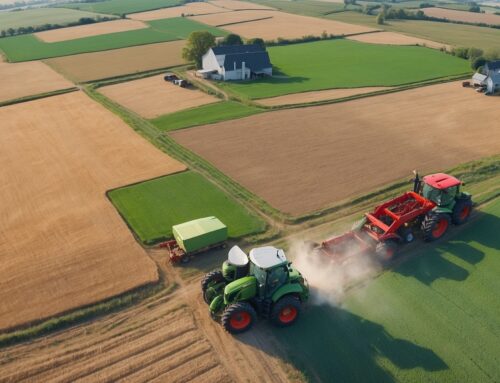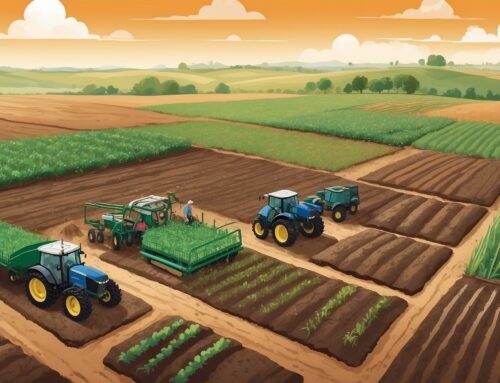Howdy, folks! I know when it comes to farming, most of us have gotten pretty used to keeping our cards close to our chests. There’s that time-tested saying: “Keep your fields close, but your secrets closer.” We’ve all got our little tricks—a special compost mix, a rotation strategy, or even just a gut feeling about the weather—that we’d prefer not to broadcast to the whole county. But lately, I’ve been thinking, maybe sharing a bit of what we’re learning from our soil moisture data could actually help all of us get ahead.
Hear me out. I’m not saying we need to give away the family farm’s recipe for success. But when it comes to something like soil moisture readings—that data isn’t just helpful to us individually; it could actually have a massive impact for all of us. It’s like when your neighbor says they just spotted armyworms at the edge of their field. They’re not bragging, and they’re not trying to give away anything proprietary—they’re letting you know so you can keep an eye on your own fields.
Turns out, sharing information isn’t always about giving away a secret—sometimes it’s about having each other’s backs. And the same could be true for our soil data.
Data Sharing: Turning Information Into Community Power
Let’s think about this like a farmer’s co-op, but instead of grain or machinery, we’re pooling data. Imagine if every farmer in a region shared their soil moisture levels or water use data—what could that do for us? For one, we’d get a really good idea of the water table health across the region. If folks downstream know what’s happening upstream, they can manage their own water needs more efficiently—or prepare for a shortage before it gets here.
And that’s not just good for us—that’s good for the land. When we share, we can optimize our water use and make sure we’re not over-irrigating in one area while another dries up.
Plus, sharing our data could help with regional planning. We’re all familiar with our local extension offices and ag programs that are supposed to help us make informed decisions. Imagine if they could see real-time moisture levels across an entire county. Instead of broad recommendations like, “consider cutting back on irrigation,” they could say, “the fields in this specific area could benefit from a bit less water in the next week.” That’s precision advice—the kind we’d give ourselves if we had eyes everywhere.
Getting Comfortable with the Idea of Sharing
Alright, I know—data sharing sounds all well and good, but how does it actually work in practice? And what’s in it for us?
First off, it’s important to know that we’re talking about anonymized, aggregated data. Nobody’s asking for your entire farm plan. No one’s going to see that one spot behind the barn where you still get a little erosion every spring (yup, we all have those trouble spots). Instead, the shared data is combined to get a broader picture—more like the average moisture level across the entire valley or trends in water use through a hot summer.
Sharing this data also has a direct payback. Let’s say you’re the one at the edge of a drought area. By accessing regional data, you might realize you’re just weeks away from a full-blown water shortage. Or maybe you find out that your field is holding more moisture than expected, while the rest of the area is parched—so it might be a good time to back off and conserve your reserves for later.
And besides just other farmers, the bigger picture here includes policy makers and water boards. They need this kind of data to make informed decisions about things like water allotments, conservation incentives, and more. The more we contribute, the better positioned we are to advocate for ourselves—whether it’s about funding for infrastructure or regulations that affect how we work.
The “Weather Report” of the Future
Remember that time the weather report called for sunshine, and you ended up scrambling in the rain because they got it wrong? Yeah, me too. But if we all share what’s happening on the ground—right here, right now—the predictions we get for our area get a lot more accurate.
Think of a moisture network like a neighborhood weather station but for the fields. We can actually make forecasts better by providing live data. When everyone contributes, we get a level of hyperlocal precision that’s practically impossible otherwise. Just like knowing that Joe’s place is always 3 degrees cooler than everyone else, now we’ll know exactly which field is drying out fastest and when to kick the irrigation into gear.
Sharing Makes All the Difference
The way I see it, our strength as farmers has always been about community. Whether it’s borrowing a hand for a fence repair, getting a jump-start from a neighbor when your tractor won’t turn over, or trading tips on the best cover crop mix—we’ve always relied on each other. Now, the way we share is changing. We’re sharing data instead of just advice, but the spirit of it is still the same: We’re all in this together, and we’re better when we help each other.
So let’s give soil moisture data sharing a shot. Let’s get connected, make those moisture sensors work not just for us, but for all of us. With smarter tools, smarter sharing, and a little bit of neighborly love, we’ll keep these fields green, these barns full, and our farms thriving.
Happy farming, and may your fields stay perfectly hydrated—no more, no less!





